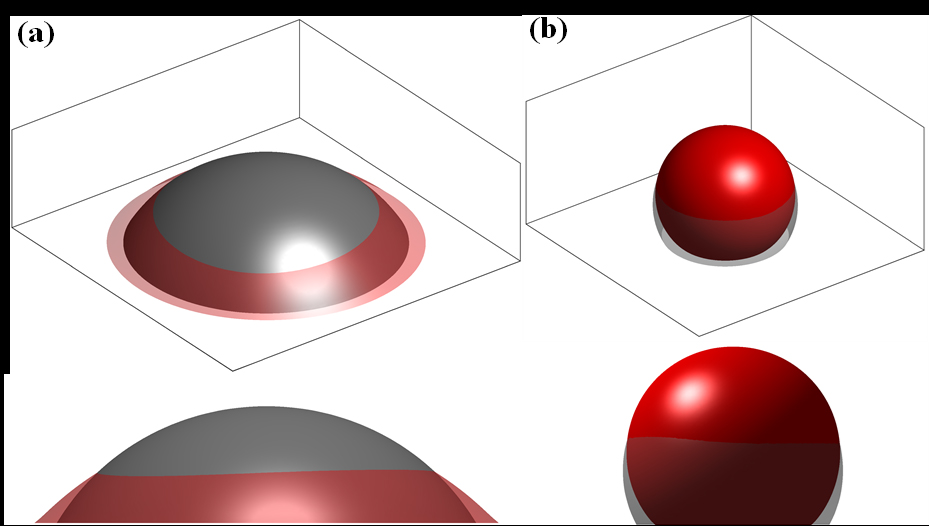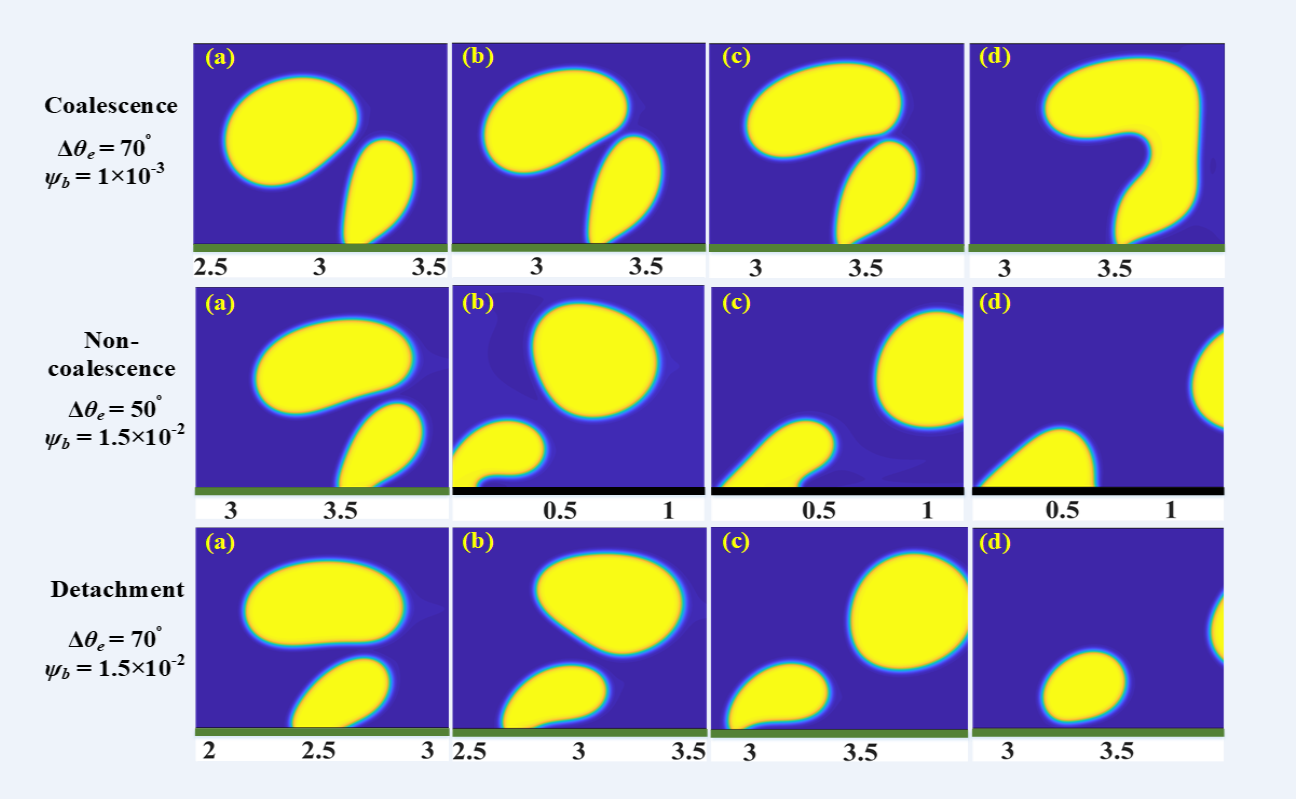Recently, Prof. Jun Yao and his team, from the Research Center of Multiphase Flow in Porous Media in School of Petroleum Engineering, made important progresses in pore-scale two-phase flow simulations with soluble surfactants. Their research (thermodynamically consistent modelling of two-phase flows with moving contact line and soluble surfactants) has been published in the well-known peer-reviewed journal - Journal of Fluid Mechanics. This work is done in collaboration with Prof. Shuyu Sun from King Abdullah University of Science & Technology and Prof. Yu-shu Wu from Colorado School of Mines. Prof. Jun Yao is the corresponding author of this article.

Surfactants, interface active agents, are known to lower the interfacial tension and allow for the formation of emulsion. Surfactants play an important role in many industrial processes. For instance, in the petroleum industry, surfactant flooding is one of important enhanced oil recovery (EOR) methods, which has been proved able to improve 5%-18% oil recovery in the oilfield development, depending on different reservoir types and injection-production parameters. Normally, both physical and chemical adsorption occurs when surfactant solution flows through porous media. The adsorption of surfactants onto the fluid-solid interface may alter the wettability, but also leads to surfactant losses inevitably. The surfactant flooding involves complex physiochemical processes, including oil-water multiphase flow, convection-diffusion of surfactants, adsorption kinetics on the fluid-fluid interface. Therefore, it is a challenging work to model and simulate the surfactant flooding at the pore scale. In the Yao’s work, they present a derivation of the phase-field moving contact line model with soluble surfactants through the first law of thermodynamics, associated thermodynamic relations and the Onsager variational principle. The derived thermodynamically consistent model consists of two Cahn–Hilliard type of equations governing the evolution of interface and surfactant concentration, the Navier–Stokes equations and the generalized Navier boundary condition for the moving contact line. Using the proposed model, they investigate the droplet dynamics with soluble surfactants on a chemically patterned surface. It is observed that droplets will form three typical flow states as a result of different surfactant bulk concentrations and defect strengths, specifically the coalescence mode, the non-coalescence mode and the detachment mode. In addition, a phase diagram for the three flow states is presented. This work was highly regarded at the 11th InterPore annual conference in Spain.


Journal of Fluid Mechanics, published by the Cambridge University Press, is recognized as the top journal in the field of fluid mechanics. The latest impact factor of this journal is 3.137, and 5-year impact factor is 3.496.
The Research Center of Multiphase Flow in Porous Media, led by Prof. Jun Yao, focuses on the fluid flow from nanoscale to the Darcy scale in porous media, and it has important academic influence in the field of oil and gas field development. In recent years, this center has published more than 100 SCI papers in peer-reviewed journals, such as Angew. Chem. Int. Edit., Nano Lett., and J. Comput. Phys.
Updated: 2019-10-09